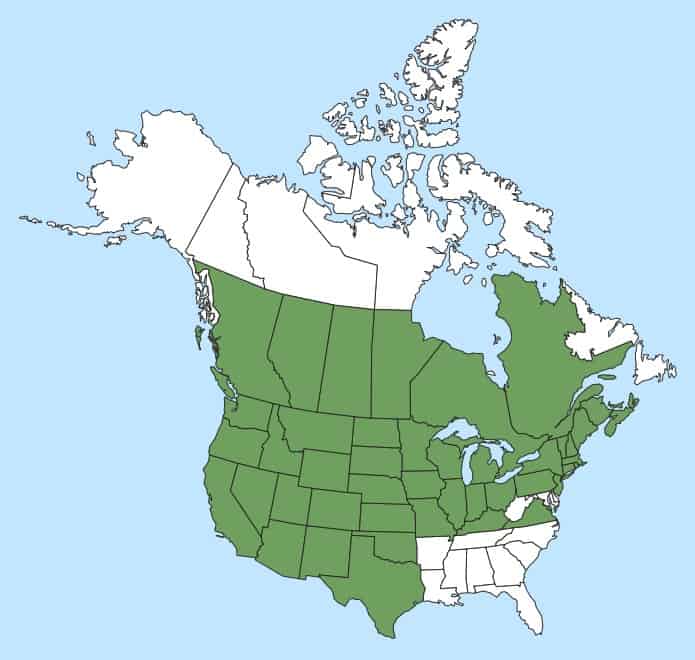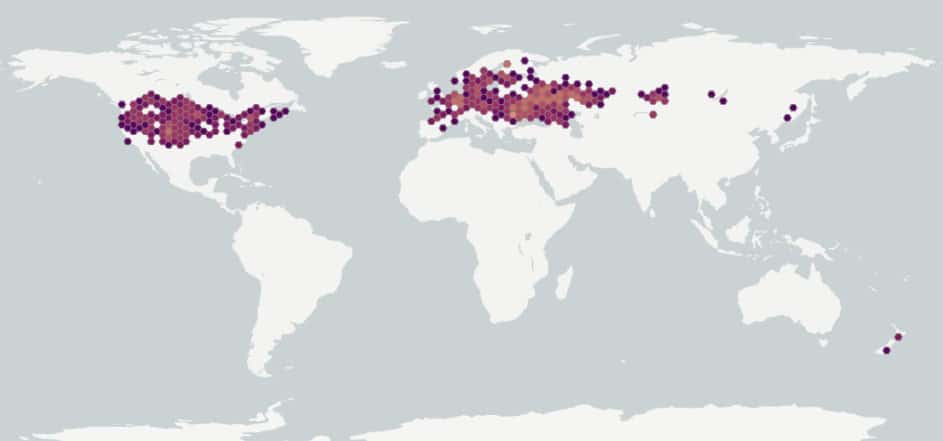Cyclachaena xanthiifolia
Overview
Aperçu
Regulation :
Remarques Réglementation:
- Quarantine lists of countries e.g. China *may be updated without notice
Regulation Notes:
On quarantine lists of countries e.g. China*.
*Quarantine lists of countries may be updated without notice.
Distribution :
Répartition :
This species is native to central North America and naturalized to the east and west, with a distribution that covers most of the U.S. and Canada (USDA-ARS 2017; USDA-NRCS 2017).
Habitat and Crop Association :
Habitat et Cultures Associées :
False ragweed is found in cultivated and abandoned fields, pastures, prairies, parklands, bottomlands, floodplains, stream banks, ditches, roadsides and disturbed areas (Darbyshire 2003; FNA 2017).
Economic Use, cultivation area, and Weed Association :
Utilisation économique, zone de culture et association de mauvaises herbes :
Duration of Life Cycle :
Durée du cycle vital:
Annual
Dispersal Unit Type :
Type d’unité de dispersion :
Achene
General Information
RENSEIGNEMENTS GÉNÉRAUX
False ragweed is common, especially on the prairies (Darbyshire 2003; FNA 2017). It produces a bitter taste in milk when grazed by cows, contact with leaves can cause dermatitis in some people and abundant pollen causes hay fever (Frankton and Mulligan 1993).
.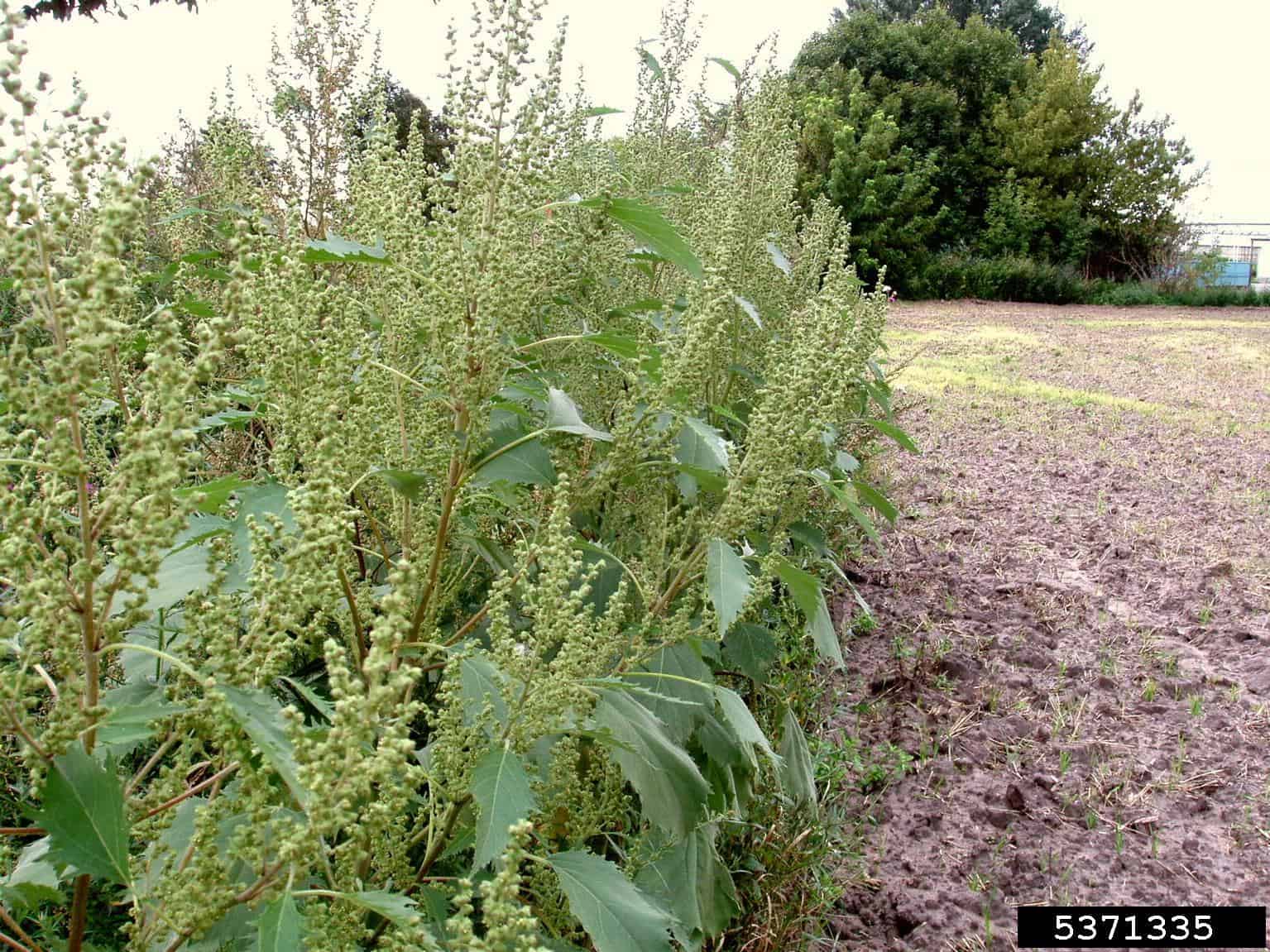
Cyclachaena xanthiifolia plants (Jan Samanek, Phytosanitary Administration, Bugwood.org)
Identification
Identification
-
Achene
Size
- Achene length: 1.9 – 3.0 mm (average: 2.4 mm) ; width: 0.9 – 1.9 mm (average: 1.5 mm)
Shape
- The achene is teardrop to egg-shaped; compressed with ridges
- The tip of the narrow end of the achene pinched and upturned to one flat side
- Two to four ridges merge together at the narrow end
Surface Texture
- The achene surface has visible longitudinal striations
- Some achenes have a slight granular crust
Colour
- Achenes are reddish brown to black in colour and have a glittery appearance under magnification
- The point of attachment and the style appendage are both lighter in colour than the achene
Other Features
- Margins are thinly pinched near the narrow end of the achene, leaving the inner portion V-shaped on one flat side
- Peg-like style appendage at wide end of the achene
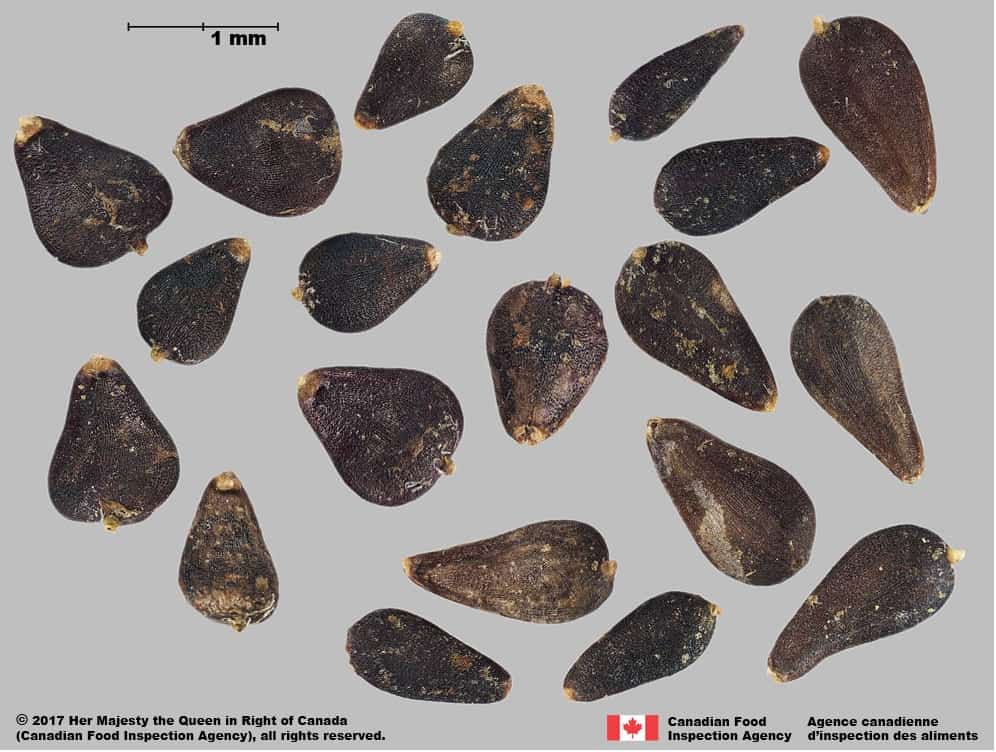
False ragweed (Cyclachaena xanthiifolia) achenes

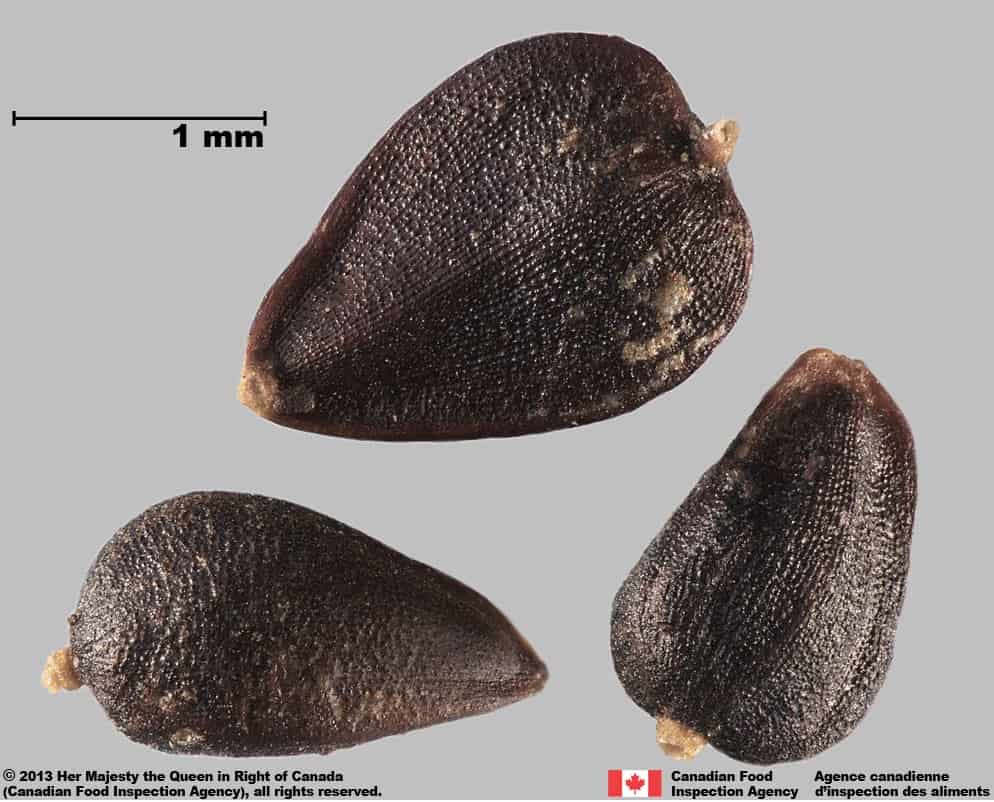
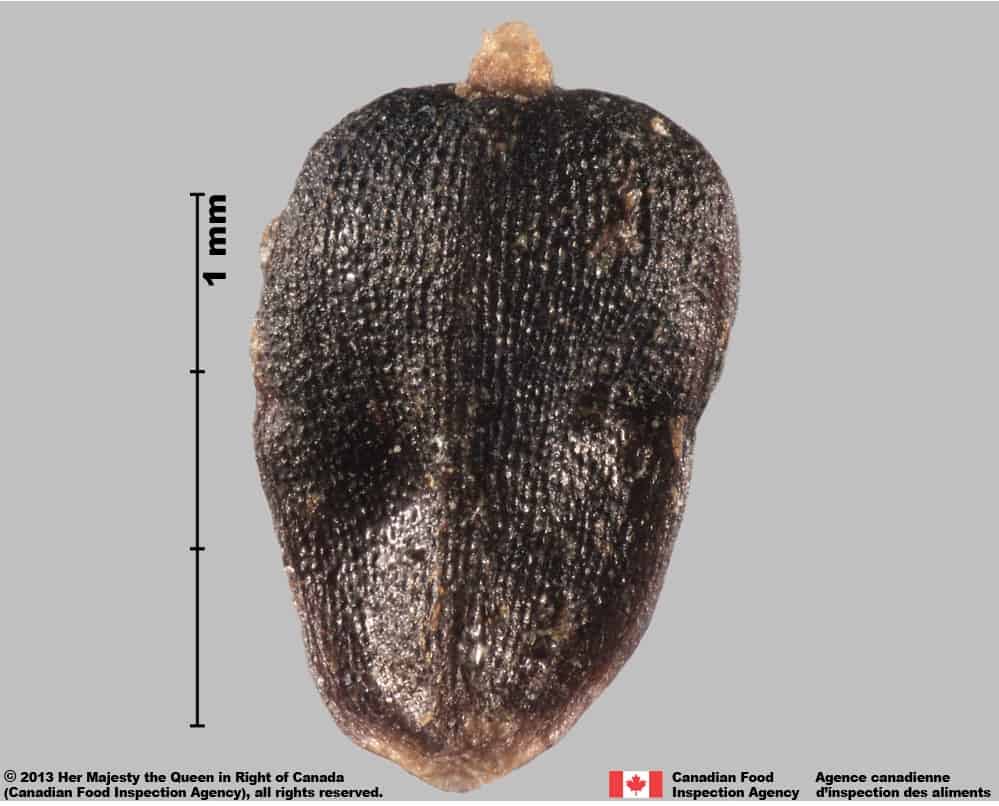
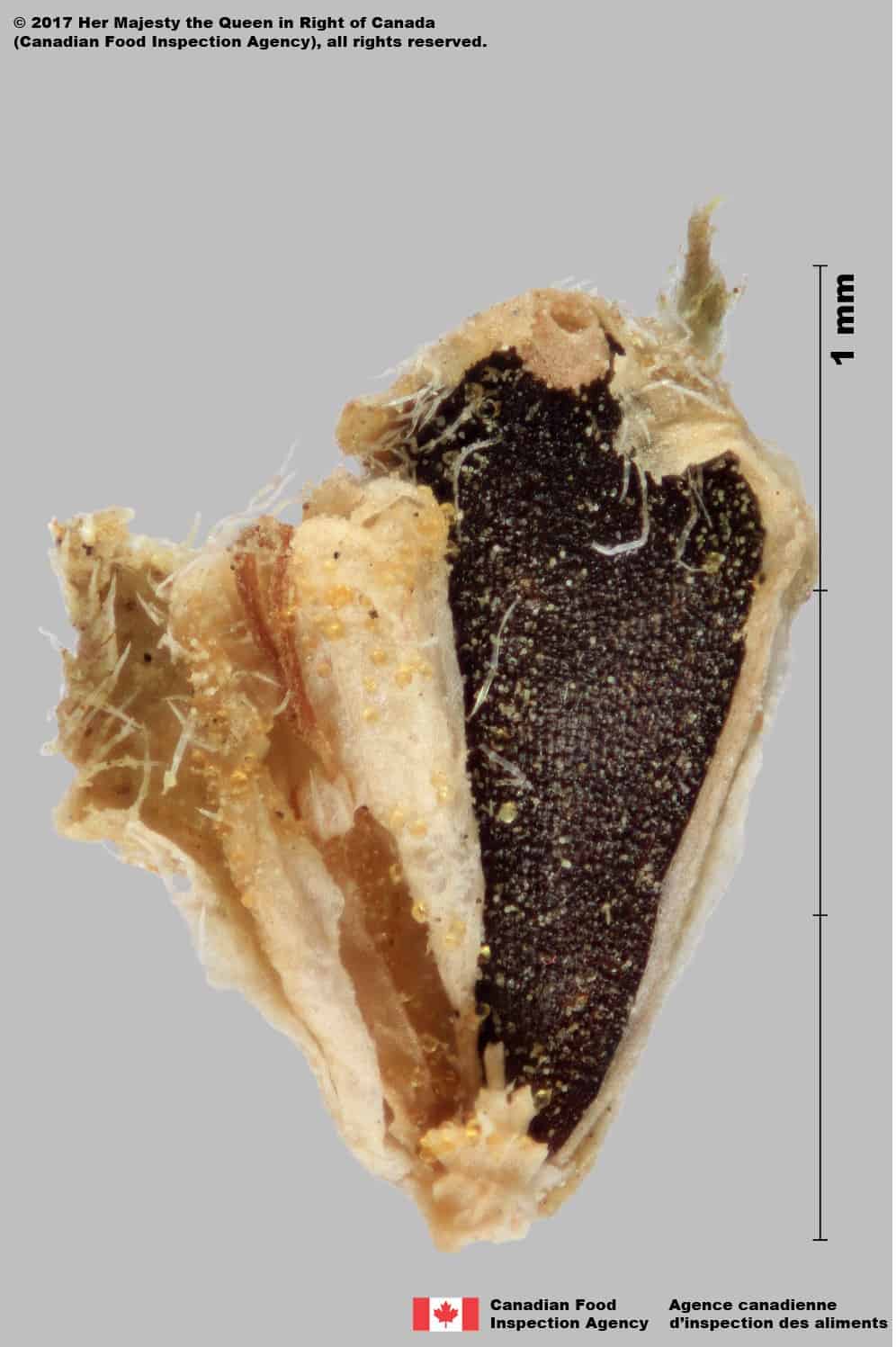
Identification Tips
CONSEILS POUR L’IDENTIFICATION
Additional Botany Information
AUTRES RENSEIGNEMENTS BOTANIQUES
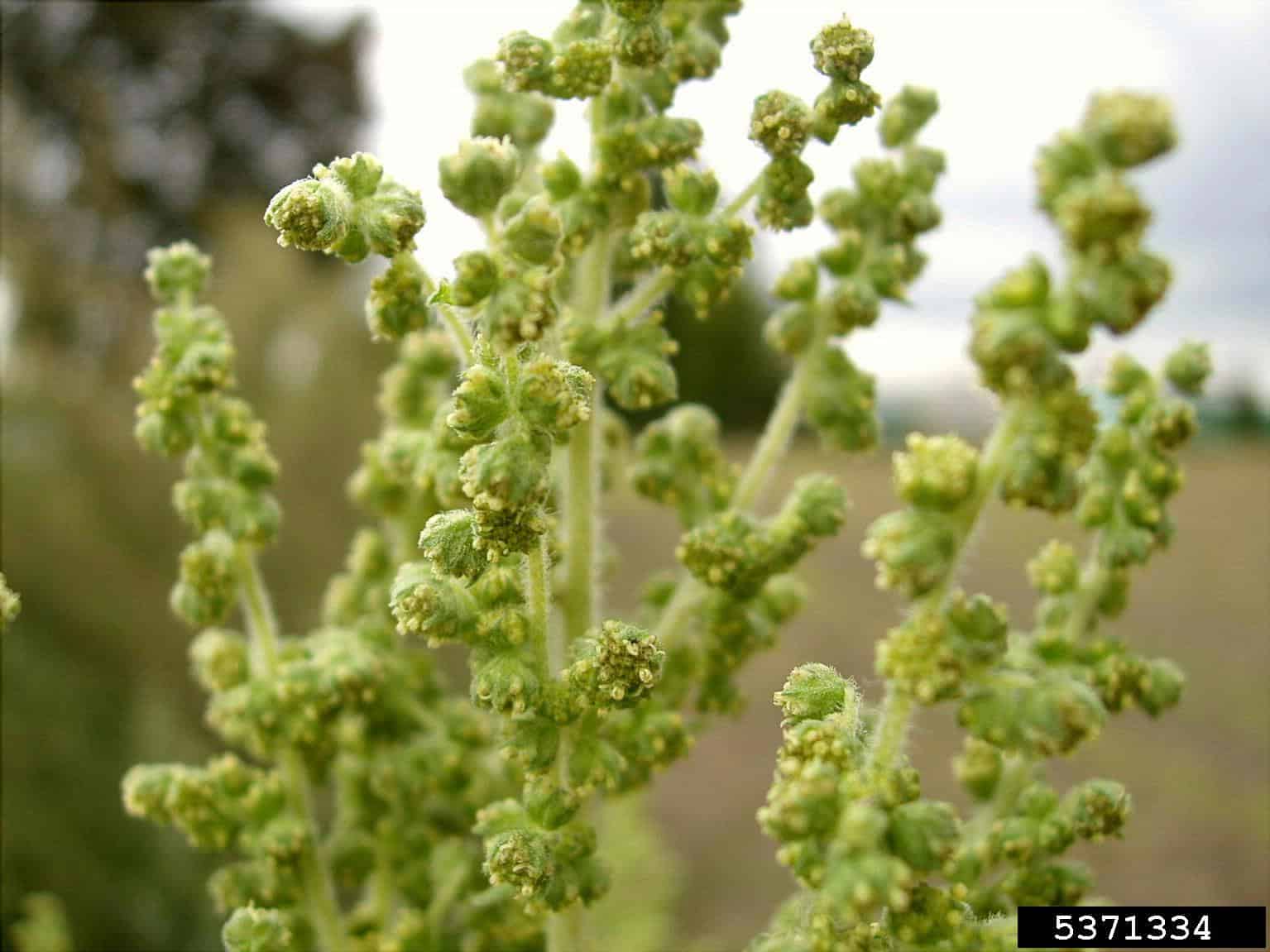
Cyclachaena xanthiifolia flowers (Jan Samanek, Phytosanitary Administration, Bugwood.org)

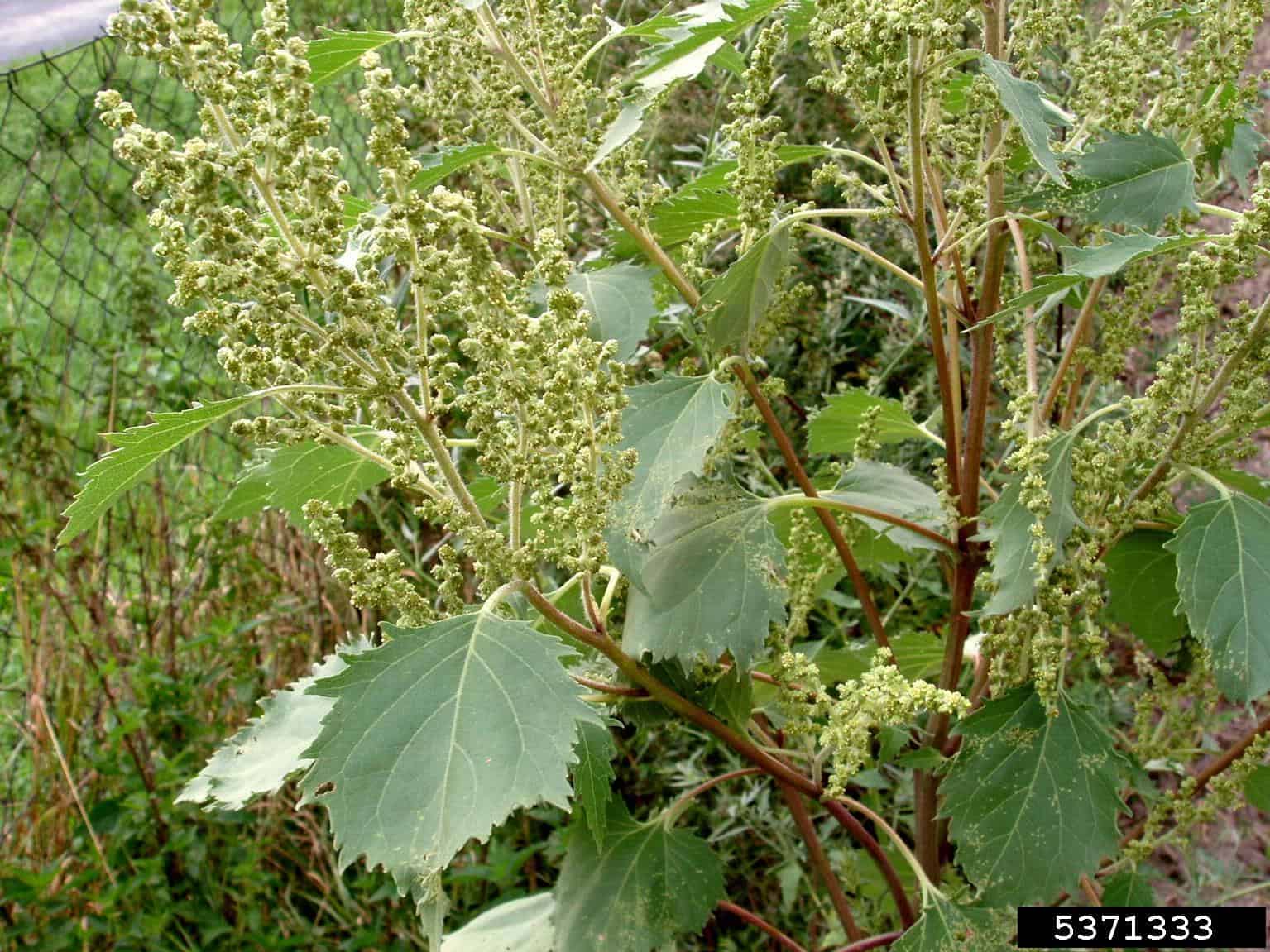
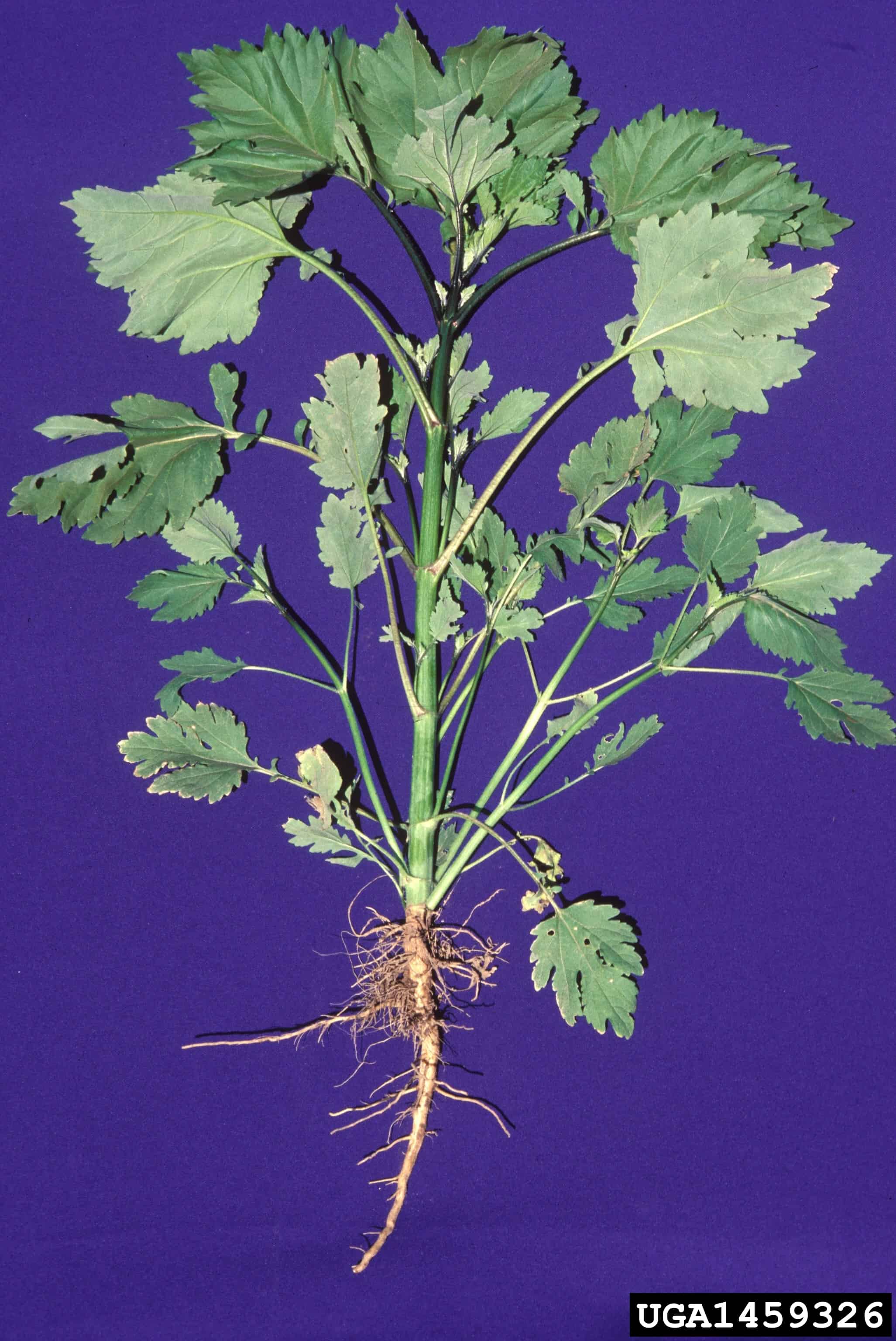
Similar Species
ESPÈCES SEMBLABLES
Similar species are based on a study of seed morphology of various species, and those with similar dispersal units are identified. The study is limited by physical specimen and literature availability at the time of examination, and possibly impacted by the subjectivity of the authors based on their knowledge and experience. Providing similar species information for seed identification is to make users aware of similarities that could possibly result in misidentification.
Iva axillaris achenes are a similar size and shape as false ragweed with merging ridges and an upturned tip at the narrow end that is light coloured.
Iva axillaris achenes are lighter in colour, have a granular crust, and a less obvious knob-like style appendage at the wide end in comparison to false ragweed. Striations are seen on some Iva axillaris achenes but are faint in comparison to those of false ragweed. Iva axillaris has a size range (length: 1.7 – 4.9 mm; width: 0.9 – 3.0 mm) that overlaps with that of false ragweed, but the first species has more size variation.
Click to select species
Cliquez pour sélectionner les espèces
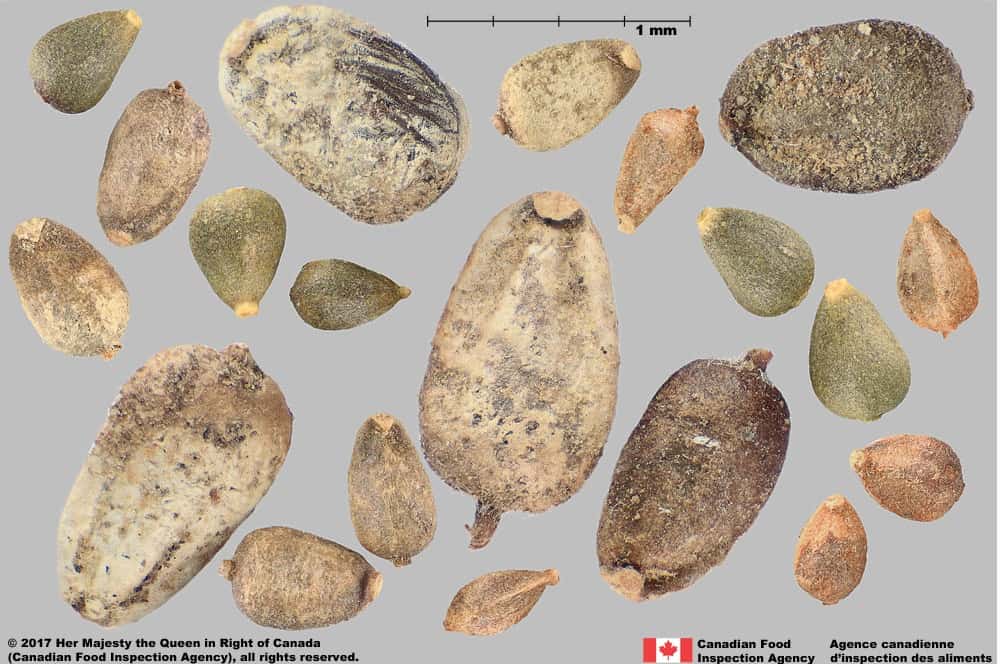
Iva axillaris
Comparison Window
Fenêtre de comparaison
MAIN SPECIES
ESPÈCES PRINCIPALES
Cyclachaena xanthiifolia

Cyclachaena xanthiifolia
Asteraceae
False ragweed (Cyclachaena xanthiifolia) achenes
MAIN SPECIES
ESPÈCES PRINCIPALES
Cyclachaena xanthiifolia

Cyclachaena xanthiifolia
Asteraceae
False ragweed (Cyclachaena xanthiifolia) achenes
MAIN SPECIES
ESPÈCES PRINCIPALES
Cyclachaena xanthiifolia

Cyclachaena xanthiifolia
Asteraceae
False ragweed (Cyclachaena xanthiifolia) achene
MAIN SPECIES
ESPÈCES PRINCIPALES
Cyclachaena xanthiifolia

Cyclachaena xanthiifolia
Asteraceae
False ragweed (Cyclachaena xanthiifolia) achene partially exposed
SIMILAR SPECIES
ESPÈCES SEMBLABLES
Iva axillaris

Iva axillaris
Asteraceae
Povertyweed (Iva axillaris) achenes
SIMILAR SPECIES
ESPÈCES SEMBLABLES
Iva axillaris
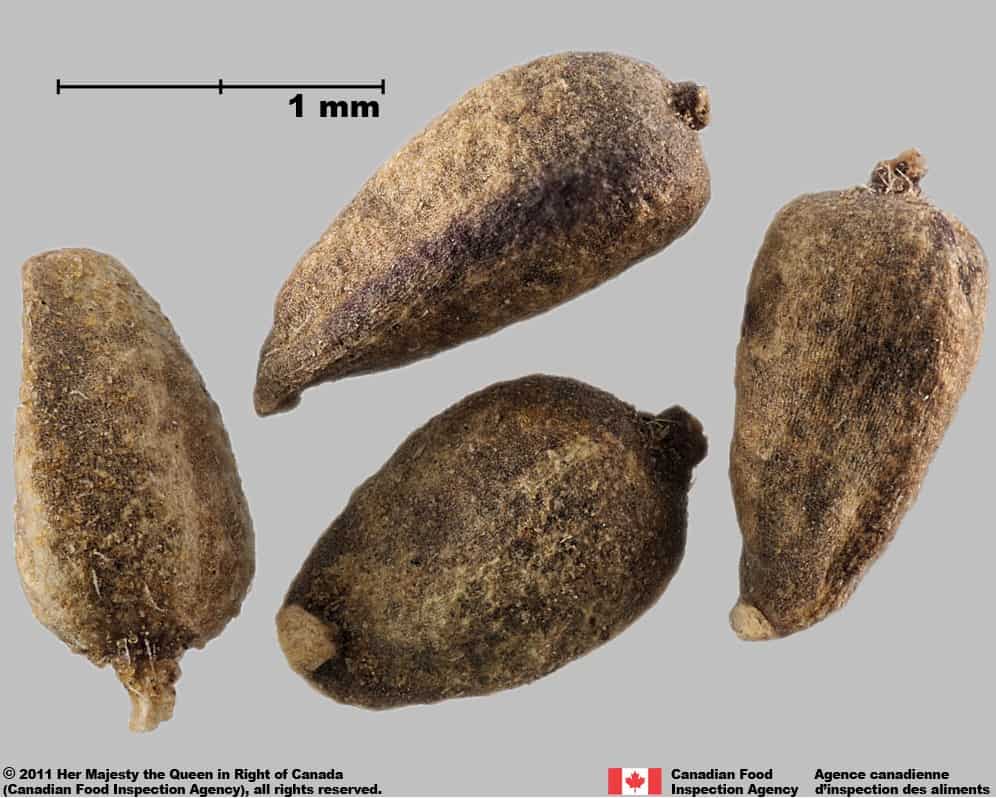
Iva axillaris
Asteraceae
Povertyweed (Iva axillaris) achenes
SIMILAR SPECIES
ESPÈCES SEMBLABLES
Iva axillaris
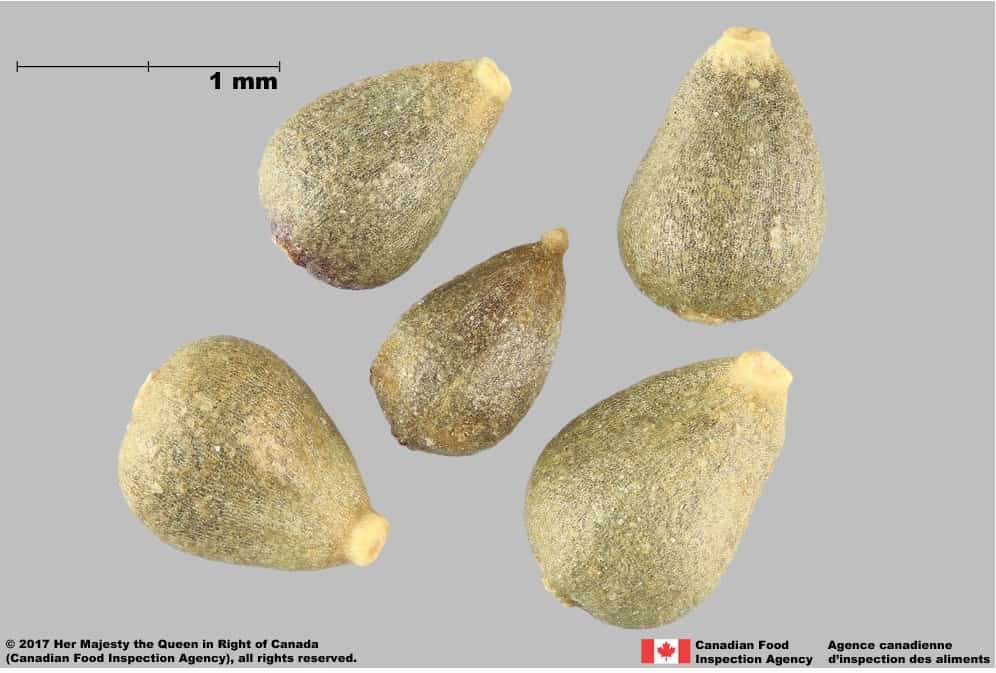
Iva axillaris
Asteraceae
Povertyweed (Iva axillaris) achenes
SIMILAR SPECIES
ESPÈCES SEMBLABLES
Iva axillaris
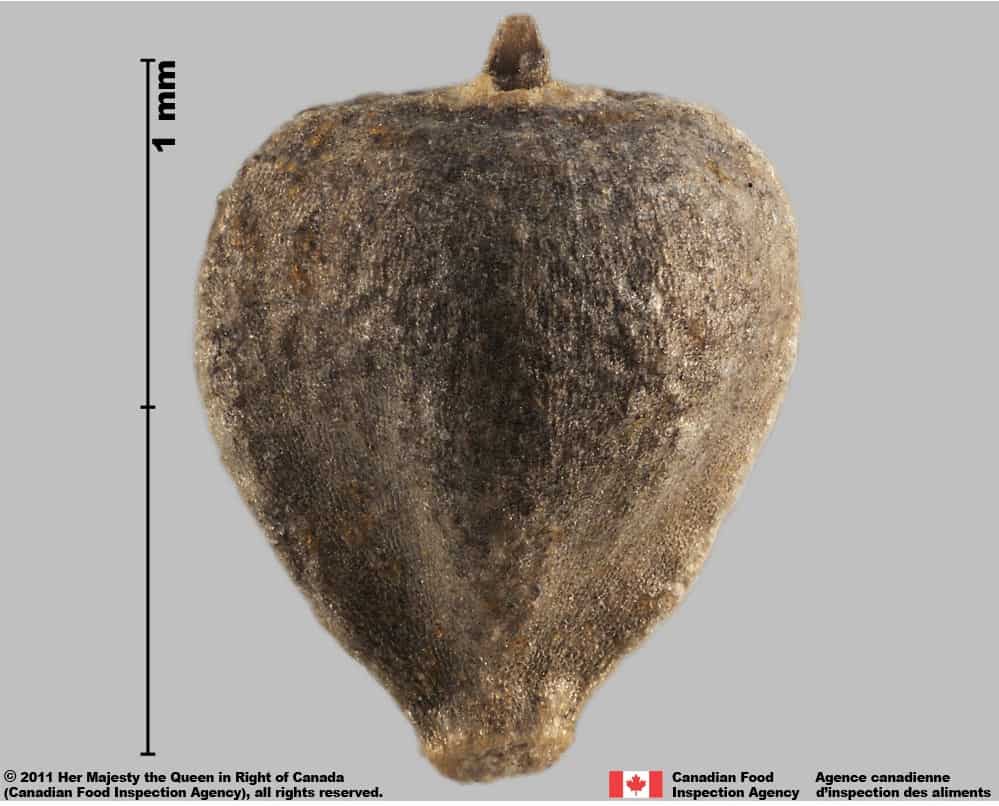
Iva axillaris
Asteraceae
Povertyweed (Iva axillaris) achene
SIMILAR SPECIES
ESPÈCES SEMBLABLES
Iva axillaris
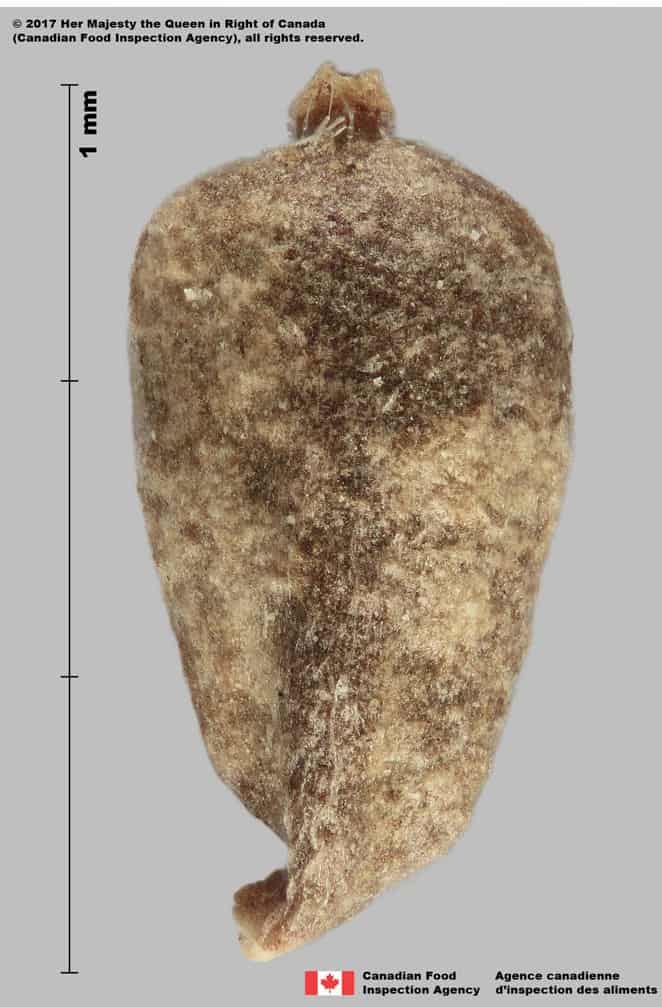
Iva axillaris
Asteraceae
Povertyweed (Iva axillaris) achene; side view
SIMILAR SPECIES
ESPÈCES SEMBLABLES
Iva axillaris
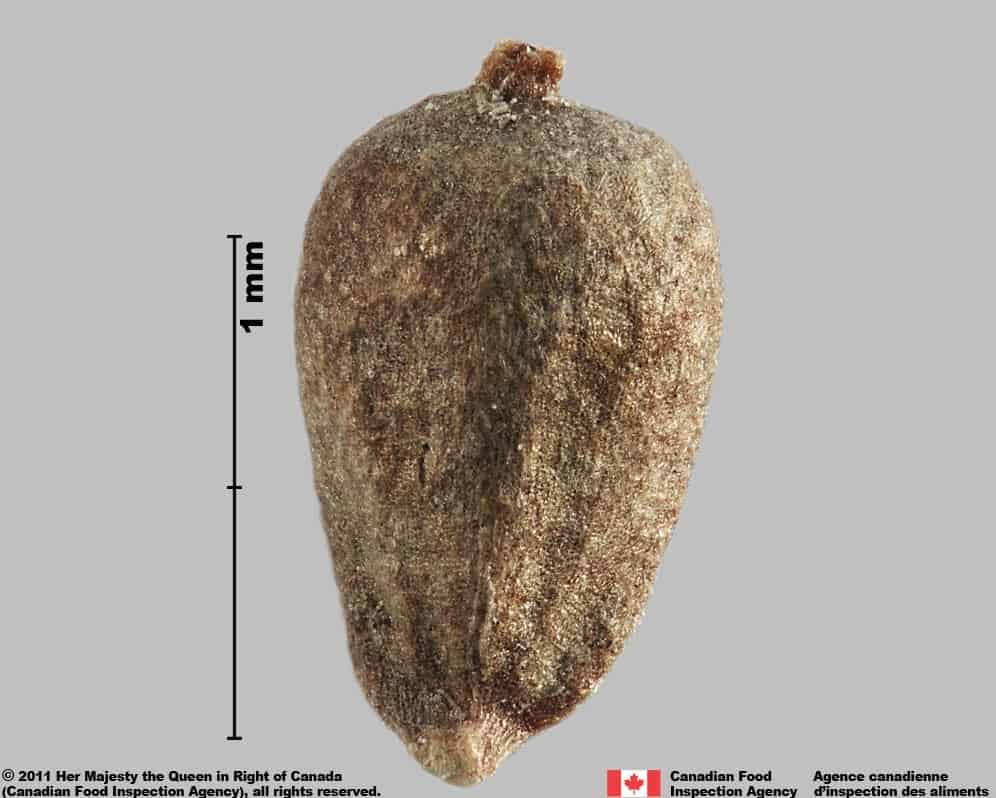
Iva axillaris
Asteraceae
Povertyweed (Iva axillaris) achene
Need ID Help?
Besoin d’aide pour l’identification?
Reference(s)
Référence(s)
Darbyshire, S. J. 2003. Inventory of Canadian Agricultural Weeds. Agriculture and Agri-Food Canada, Research Branch. Ottawa, ON.
Flora of North America (FNA) Editorial Committee, eds. 1993+. Flora of North America North of Mexico [Online]. 22+ vols. New York and Oxford. http://beta.floranorthamerica.org. Accessed April 25, 2017.
Flora of North America (FNA) Editorial Committee, eds. 1993+. Flora of North America North of Mexico [Online]. 22+ vols. New York and Oxford. Accessed December 29, 2022.
Frankton, C. and Mulligan, G. A. 1993. Weeds of Canada. Agriculture Canada, Publication 948, Ottawa, ON. 217 pp.
Global Biodiversity Information Facility (GBIF) Secretariat. 2022. https://doi.org/10.15468/39omei Accessed via https://www.gbif.org/species/3141890 Accessed December 29, 2022.
U.S. Department of Agriculture-Agricultural Research Services (USDA-ARS). 2017. Germplasm Resources Information Network (GRIN), https://npgsweb.ars-grin.gov/gringlobal/taxon/taxonomysearch Accessed April 25, 2017.
U.S. Department of Agriculture-Natural Resources Conservation Service (USDA-NRCS). 2017. The PLANTS Database. National Plant Data Team, Greensboro, NC USA. https://plants.usda.gov/home Accessed April 25, 2017.



